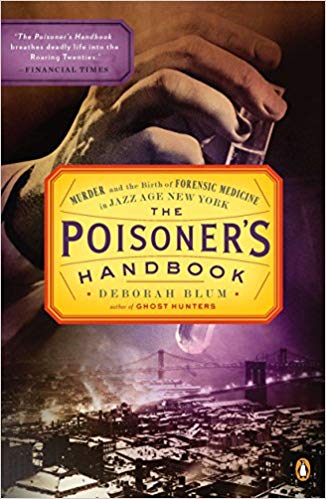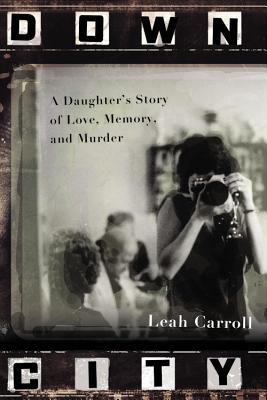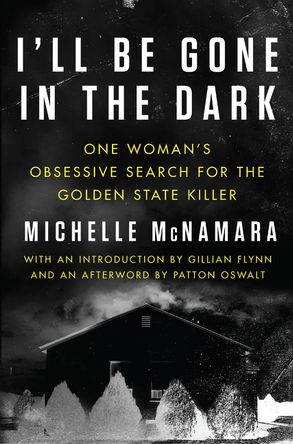The evolution of true crime writing these last ten years has been dramatic to witness. Quibble over the precedents and the causes if you want (and we often want to), there’s no denying that we’re in a true crime boom period, if not a new golden era. Authors are getting more respect, and their work is resonating in the popular culture like never before. Much of that is due to the quality of the work, a shift in emphasis from stories about perpetrators to stories about victims, and an increasingly personal and political approach to the stories being told. The definition of true crime has expanded in recent years to encompass all manner of investigations, mysteries, and transgressions. Truman Capote’s In Cold Blood remains a guiding light, but today’s nonfiction crime authors are absorbing lessons from investigate reporters, podcasters, documentarians, and more. These are books driven by a mission—to effect social change, to solve decades’ old mysteries, to give voice to the voiceless. In short, these aren’t your parents’ procedurals.
The field of books that could conceivably be labeled “true crime” is so vast, it’s nearly impossible to narrow it down to a coherent list of the ten best. But we’ve undertaken to do it anyway, with a few caveats. In general, we limited ourselves to just two true crime memoirs in the top ten, but only because we needed room for other kinds of books and that area in particular has seen a flowering this decade. You’ll notice more books from recent years on this list; hopefully you’ll agree that’s not a recency bias, but an evidence of the genre’s maturation. Note also, we’ve pushed works of criticism and literary scholarship into a separate section of notables below; those are fantastic books, and we highly recommend them. You’ll find a host of notable books listed below; the top-10 is based on a great deal of debate and soul-searching.
Okay, enough excuses. We’re here to celebrate books—the decade’s most notable achievements in true crime.
___________________________________
The Best True Crime Books of the Last Decade
___________________________________
The Poisoner’s Handbook: Murder and the Birth of Forensic Medicine in Jazz Age New York, by Deborah Blum
(2010)
Deborah Blum’s The Poisoner’s Handbook is an incredibly thorough and endlessly fascinating account of one of the most important public health-and-safety developments in history: forensic toxicology, which was pioneered from 1915 to 1936, principally in New York City. But even more interesting than an outlining of the scientific discoveries responsible for the designation of this field is Blum’s presentation of the absurd historical situation surrounding it: a culture in which many people died from chemicals because few knew anything about them. Blum had a Pulitzer for scientific writing prior to writing this book, and she balances expert technical breakdowns with a gripping social history. First of all, during Prohibition, the manufacturing of illegal alcohol facilitated the mass imbibing of dangerous or crude substances. In Gilded Age New York City, people could poison others and get away with it, while plenty of people accidentally ingested poison, or too much of it, and so were killed. Besides the general culture of ignorance, New York City’s corrupt Tammany Hall political machine controlled the coroner’s office, and this meant that no efforts were made to learn or teach anything about chemicals. The city’s medical examiners of the early century were in the pockets of political racketeers, did not conduct proper examinations, and often falsified death certificates. But then in 1918, things changed, and suddenly there was a new coroner in town. His name was Dr. Charles Norris, a wealthy gentleman, and he brought with him Alexander Gettler, a first-generation forensic chemist. Blum treats these two like heroes, but, in an Oliver Sacks fashion, focuses more on individual case studies of poisons gone wrong. Overall, though, it is a kaleidoscopic, clever, and completely mind-blowing window into a moment of history so simultaneously absurd and progressive.
People Who Eat Darkness: The True Story of a Young Woman Who Vanished from the Streets of Tokyo—and the Evil That Swallowed Her Up, by Richard Lloyd Parry
(2012)
Richard Lloyd Parry was a foreign correspondent covering the disappearance of twenty year-old Brit Lucie Blackman in Japan in 2000, and over the years he kept close to the case and to Blackman’s family, as Japanese law enforcement captured and prosecuted her killer, Joji Obara. But Lloyd Parry’s account of that terrible ordeal is far more than a true crime blow-by-blow or procedural, it’s a deeply searching investigation of cultures, individual evil, morality, and, above, all else, grief. People Who Ate Darkness gradually becomes a meditation on the nature of the parent-child relationship, and what deeply lasting trauma a violent murder can do to families and societies. On release, the book earned many comparisons to In Cold Blood, and like Capote, Lloyd Parry’s real subject became not just the evil done, but the resonant damage and its afterlife.
The Beast: Riding the Rails and Dodging Narcos on the Migrant Trail, by Oscar Martinez
(2013)
For over a decade, Oscar Martinez has been a witness and a chronicler of the ground-level effects of the war on drugs, reporting from across Latin America with a special focus on Central America and his home country, El Salvador, where more recently he’s been writing about the bloody culture of MS-13 and other narco-cliques that have expanded their power. Before that, he was charting the plight of migrants running the terrible gauntlet across borders and through narco-controlled territories. Martinez rode the dreaded train known as “The Beast” and collected the stories of those traveling north on this perilous journey. While crime isn’t strictly the focus of the book, Martinez looks at the direct effects of mass crime at a regional/global level, as well as the outlaw communities springing up to prey on the vulnerable. The subject matter is dark, but Martinez writes with the terrible, piercing clarity of a Cormac McCarthy. The Beast is a dispatch from a nearly lawless land, where families struggle and suffer, narcos get richer, violence spreads, the drugs head north, the guns head south, and so it goes on. Forget the rhetoric, the politics, and the propaganda. The Beast is the real story of the drug war.
The Other Side, by Lacy Johnson
(2014)
Twenty years ago, Lacy Johnson’s ex-boyfriend kidnapped her and held her hostage while raping her repeatedly. He had prepared for the abduction and assault by turning his basement into a soundproofed dungeon. In this true crime memoir, Johnson recounts the horrifying details of the experience, while tracing the origins of abuse in a history of the relationship. Johnson’s memoir is iconic not only because of its stunning writing, but because it symbolized the turn over the past decade towards respecting the stories of victims, rather than exploiting those who’ve been subjected to violence for lurid sensationalism.
Killers of the Flower Moon: The Osage Murders and the Birth of the FBI, by David Grann
(2017)
David Grann has long been one of the most dogged investigative writers at work, and Killers of the Flower Moon put all his archival skills and tenacity to work uncovering a historical atrocity. For decades after the turn-of-the-century, the Osage people, based mostly in Oklahoma, were some of the richest per capita in the world, thanks to the vast mineral resources they controlled. When their members began mysteriously dying, they raised alarms throughout the country and brought in their own detectives, but few answers were uncovered, thanks largely to a massive, official coverup. Years later, working through deep archival research and interviews with descendants, Grann was finally able to posit what happened to those Osage—a sprawling conspiracy of murder aimed at wrestling away their mineral rights. It’s a brutal, shocking chapter in American history, and Grann tells it with all the power the story deserves. No book could provide comfort to the descendants of the murdered, but at least now they have more answers.
The Road to Jonestown: Jim Jones and Peoples Temple, by Jeff Guinn
(2017)
Guinn has established himself as one of the premiere chroniclers of American crime history, and lately he seems to have found a special muse in narratives of the postwar counterculture, with fascinating books studying the lives of Charles Manson and Jim Jones. The Road to Jonestown stands out, both for the specificity with which Guinn drills down into Jones himself and his strange evolution from Midwestern snake oil salesman to west coast guru to millenarian holy man, and also for the sheer breadth of the social movements that touched up against the Peoples Temple. Guinn shows how deeply woven into the fabric of modern San Francisco the “temple” was, how central Jones was to municipal leaders, and how that strange, unlikely dynamic was part of the power he held over his flock. What happened in the jungles of Guyana may forever remain shrouded in some dark corner of pyschological history, but Guinn goes a long way toward demystifying the tragedy and explaining who, precisely, led this church down that terrible path.
Down City: A Daughter’s Story of Love, Memory, and Murder, by Leah Carroll
(2017)
Along with Sarah Perry’s After The Eclipse, Leah Carroll’s Down City has helped usher in an even more personal era in true crime. Carroll’s parents both loved her deeply. By the time she had turned eighteen, Carroll’s mother had been murdered in a crime implicating Providence underworld figures, and her father had spent the subsequent decade drinking himself to death. What follows is a beautiful, heartbreaking meditation on the meaning of love and loss, as well as an investigation into the story behind her mother’s killing. This was a powerful decade for true crime memoirs, and Carroll’s stands out as a special, audacious achievement.
I’ll Be Gone in the Dark: One Woman’s Obsessive Search for the Golden State Killer, by Michelle McNamara
(2018)
The scope and intensity of McNamara’s investigation into the man she dubbed the “Golden State Killer” would be reason enough to read this book. The fact that she also ruminates on her own lifelong interest in crime and the personal stories that set her on a life’s path makes this an even richer read. It’s heartbreaking to know she didn’t live long enough to bring her subject to justice, but gratifying to know that her efforts helped keep the search alive and that now, with a suspect finally in custody, survivors may find some sense of peace.
The Real Lolita: The Kidnapping of Sally Horner and the Novel That Scandalized the World, by Sarah Weinman
(2018)
While part of what keeps people reading Lolita is our endless quest to discover why, exactly, we’re allowing ourselves to enjoy such a sordid and problematic text, Sarah Weinman’s The Real Lolita is the final step in divorcing ourselves from Nabokov love and moving wholeheartedly into Nabokov critiques. Lolita was not born, like Athena from Zeus, fully from Nabokov’s mind—as Sarah Weinman has proved in The Real Lolita, the character was ripped from the headlines, based on a teenage girl named Sally Horner who was kidnapped and assaulted by a pedophile, and later escaped her years-long captivity only to meet a tragic and sudden end. The Real Lolita is not only a necessary response to a problematic classic, but a lesson in restoring humanity to the exploited, and a cautionary tale for all writers, crime and literary alike.
Say Nothing: A True Story of Murder and Memory in Northern Ireland, by Patrick Radden Keefe
(2019)
In Say Nothing, Patrick Radden Keefe takes us into the murky history of the Irish Troubles’ Disappeared—a flashpoint both during the conflict and in the ability to process its legacy. Keefe traces the history of the Troubles through the murder of a mother of eight, kidnapped for her supposed support for the British. Keefe uses this single incident as a jumping off point to explore every aspect of the conflict, and in particular, the memorialization of conflict through oral history projects (when Boston College embarked on an effort to record the stories of the conflict, the IRA had fractured over the Good Friday Agreement and some were willing to talk; their stories ended up leading to a surprising reckoning both in Ireland and abroad). A thrilling tale all the more harrowing because it is entirely true, Keefe’s magnum opus takes us through the personal and political for a story as human as it is honest. Beautifully and forcefully written, well-researched, and not to be missed.
___________________________________
Notable Selections
___________________________________
The Devil and Sherlock Holmes: Tales of Murder, Madness, and Obsession, David Grann (2010) · Devil in the Grove: Thurgood Marshall, the Groveland Boys, and the Dawn of a New America, Gilbert King (2012) · Manson: The Life and Times of Charles Manson, Jeff Guinn (2013) · Midnight in Peking: How the Murder of a Young Englishwoman Haunted the Last Days of Old China, Paul French (2013) · Midnight in Mexico: A Reporter’s Journey Through a Country’s Descent Into Darkness, by Alfredo Corchado (2013) · A Spy Among Friends: Kim Philby and the Great Betrayal, Ben McIntre (2014) · Kitty Genovese: The Murder, the Bystanders, the Crime that Changed America, Kevin Cook (2014) · Ghettoside: A True Story of Murder in America, Jill Levy (2015) · Dreamland: The True Tale of America’s Opiate Epidemic, Sam Quinones (2015) · The Brothers: The Road to an American Tragedy, Masha Gessen (2015) · Who Killed These Girls?: The Unsolved Murders that Rocked a Texas Town, Beverly Lowry (2016) · The Midnight Assassin: The Hunt for America’s First Serial Killer, Skip Hollandsworth (2016) · Missoula: Rape and Justice in a College Town, Jon Krakauer (2016) · Whipping Boy: The Forty-Year Search for My Twelve-Year-Old Bully, Allen Kurzweil (2016) · American Heiress: The Wild Saga of the Kidnapping, Crimes, and Trial of Patty Hearst, Jeffrey Toobin (2016) · The Red Parts: Autobiography of a Trial, Maggie Nelson (2016) · A History of Violence: Living and Dying in Central America, Oscar Martinez (2016) · The Fact of a Body: A Murder and a Memoir, Alexandra Marzano-Lesnevich (2017) · The Stranger in the Woods: The Extraordinary Story of the Last True Hermit, by Michael Finkel (2017) · American Fire: Love, Arson, and Life in a Vanishing Land, Monica Hesse (2017) · Bloodlines: The True Story of a Drug Cartel, the FBI, and the Battle for a Horse-Racing Dynasty, by Melissa Del Bosque (2017) · The Spider and the Fly: A Reporter, A Serial Killer, and the Meaning of Murder, Claudia Rowe (2017) · The Hot One: A Memoir of Friendship, Sex, and Murder, Carolyn Murnich (2017) · The Man from the Train: The Solving of a Century-Old Serial Killer Mystery, Bill James and Rachel McCarthy James (2017) · Ladykillers: Deadly Women Through History, Tori Telfer (2017) · Tinderbox: The Untold Story of the Upstairs Lounge Fire, Robert Fieseler (2018) · The Corporation: An Epic Story of the Cuban American Underworld, TJ English (2018) · Invisible: The Forgotten Story of the Black Woman Lawyer Who Took Down America’s Most Powerful Mobster, Stephen L. Carter (2018) · The Feather Thief: Beauty, Obsession, and the Natural History Heist of the Century, Kirk W. Johnson (2018) Dopesick: Dealers, Doctors, and the Drug Company that Addicted America Hardcover, Beth Macy (2018)
___________________________________
Notable Criticism
___________________________________
The Talented Miss Highsmith: The Secret Life and Serious Art of Patricia Highsmith, Joan Schenkar (2010) · Charlie Chan: The Untold Story of the Honorable Detective and this Rendezvous with American History, Yunte Huang (2011) · Street Poison: The Biography of Iceberg Slim, Justin Gifford (2015) · Murder in the Closet: Essays on Queer Clues in Crime Fiction Before Stonewall, Curtis Evans (2016) · The Golden Age of Murder, Martin Edwards (2016) · The Lost Detective: Becoming Dashiell Hammett, Nathan Ward (2016) · It’s All One Case: The Illustrated Ross McDonald Archives, by Kevin Avery and Paul Nelson (2016) · Chester B. Himes: A Biography, Lawrence P. Jackson (2017) · Dead Girls: Essays on Surviving An American Obsession, Alice Bolin (2018) · Agatha Christie: A Mysterious Life, Laura Thompson (2018) · Street Players: Black Pulp Fiction and the Making of a Literary Underground, Kinohi Nishikawa (2019) · Savage Appetites: Four True Stories of Women, Crime, and Obsession, Rachel Monroe (2019) · Dead Blondes and Bad Mothers: Monstrosity, Patriarchy, and the Fear of Female Power, Sady Doyle (2019) · Furious Hours: Murder, Fraud, and the Last Trial of Harper Lee, Casey Cep (2019)



























